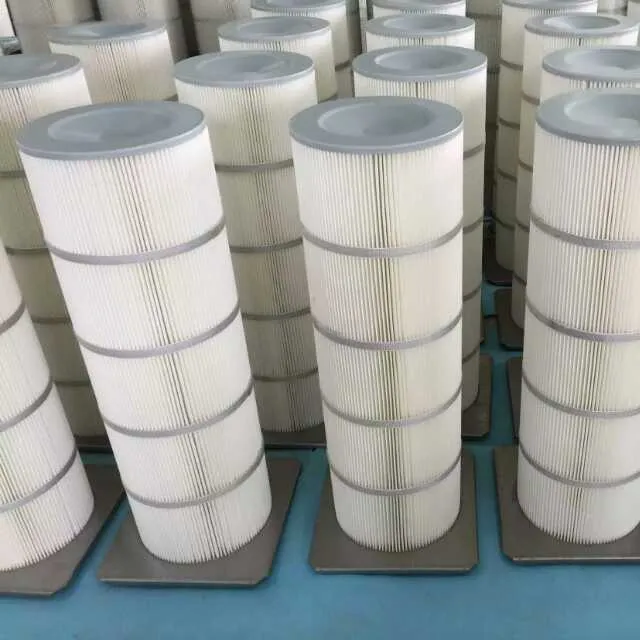 Tel:
+8615930870079
Tel:
+8615930870079
دسمبر . 11, 2024 19:43 Back to list
ss sintered filter cartridge
The Importance of SS Sintered Filter Cartridges in Modern Filtration
In the realm of modern filtration technologies, SS (Stainless Steel) sintered filter cartridges have emerged as a highly efficient solution for a variety of industrial applications. Constructed from compacted stainless steel powder, these cartridges boast remarkable durability, high filtration efficiency, and resistance to chemicals and high temperatures. This article explores the technical aspects, applications, advantages, and maintenance of SS sintered filter cartridges.
Understanding Sintered Filter Cartridges
Sintered filter cartridges are made through a process called sintering, where fine stainless steel particles are compressed and then heated to form a solid, porous structure. The resulting filter medium features a complex network of pores that effectively captures particles and contaminants while allowing liquids or gases to flow through. The pore size can be tailored during the manufacturing process, making these filters suitable for various filtration needs.
Applications of SS Sintered Filter Cartridges
SS sintered filter cartridges are widely used across multiple industries. In the chemical industry, they are integral in the filtration of corrosive substances, where traditional filters might falter. In the food and beverage sector, these filters ensure that products meet high-quality standards by removing unwanted particles without introducing impurities. The oil and gas industry relies on these cartridges for both upstream and downstream processes to maintain the quality of fluids and protect equipment from contaminants.
Moreover, in water treatment applications, SS sintered filter cartridges are employed for both microfiltration and ultrafiltration. Their robustness allows them to withstand harsh conditions, making them ideal for industrial wastewater treatment and even in potable water systems.
Advantages of SS Sintered Filter Cartridges
ss sintered filter cartridge

One of the primary advantages of SS sintered filter cartridges is their exceptional durability. Unlike traditional filters, which may degrade over time, sintered filters have a long service life due to their robust material composition. They can endure high temperatures and pressures without compromising performance, making them suitable for demanding environments.
Furthermore, these cartridges are easy to clean and can often be reused, which can significantly lower operational costs. Their stainless steel construction means they are also resistant to rust and corrosion, contributing to their longevity and reliability.
Another important aspect is their high filtration efficiency. With customizable pore sizes, these filters can effectively remove particulates as small as a few microns. This precise filtration capability is crucial for industries that require stringent quality control measures.
Maintenance and Longevity
To ensure optimal performance and longevity of SS sintered filter cartridges, proper maintenance is essential. Regular cleaning using methods such as backwashing or chemical cleaning can prevent clogging and maintain a consistent flow rate. Additionally, visual inspections can help identify wear or damage, allowing for timely replacements.
The option to regenerate these filters by cleaning and reusing them, further illustrates their sustainability. By reducing waste and consumption of filter materials, industries can align with environmentally friendly practices.
Conclusion
In summary, SS sintered filter cartridges offer a versatile, durable, and efficient filtration solution suitable for various industrial applications. Their unique construction and ability to perform under extreme conditions set them apart from traditional filtration media. As industries continue to prioritize quality and sustainability, the adoption of SS sintered filter cartridges is likely to grow, paving the way for cleaner processes and better environmental stewardship. By investing in these innovative filters, companies can ensure they meet both regulatory requirements and customer expectations while optimizing operational performance.
-
Nano Fiber Technology: Revolutionizing Cartridge Dust Collector FiltersNewsAug.06,2025
-
How Activated Carbon Air Cartridges Eliminate OdorsNewsAug.06,2025
-
Dust Filter Cartridge Handling Fine Particulate MatterNewsAug.06,2025
-
Cartridge Dust Collector Filter for Welding Fume ExtractionNewsAug.06,2025
-
Activated Carbon Filter Cartridge Effectiveness Against VOCsNewsAug.06,2025
-
Activated Carbon Air Filter Cartridge Benefits ExplainedNewsAug.06,2025

 Email:
Email:





